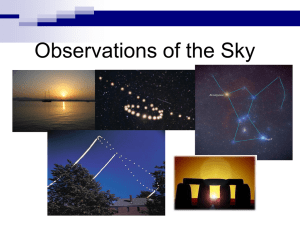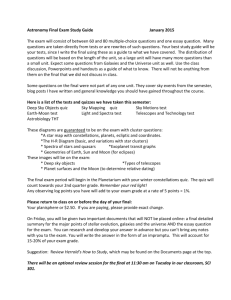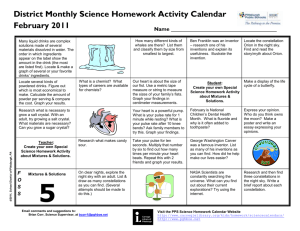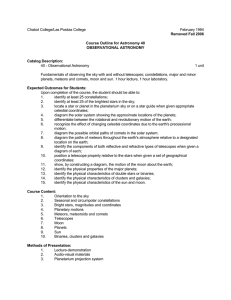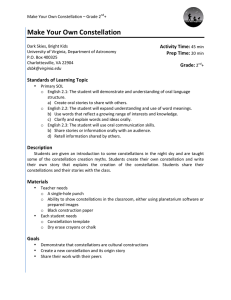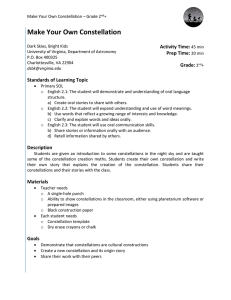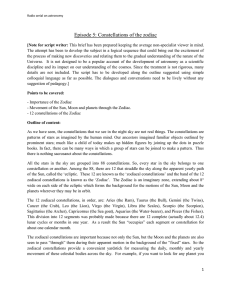Chabot College October 1999 – Astronomy & the Night Sky
advertisement
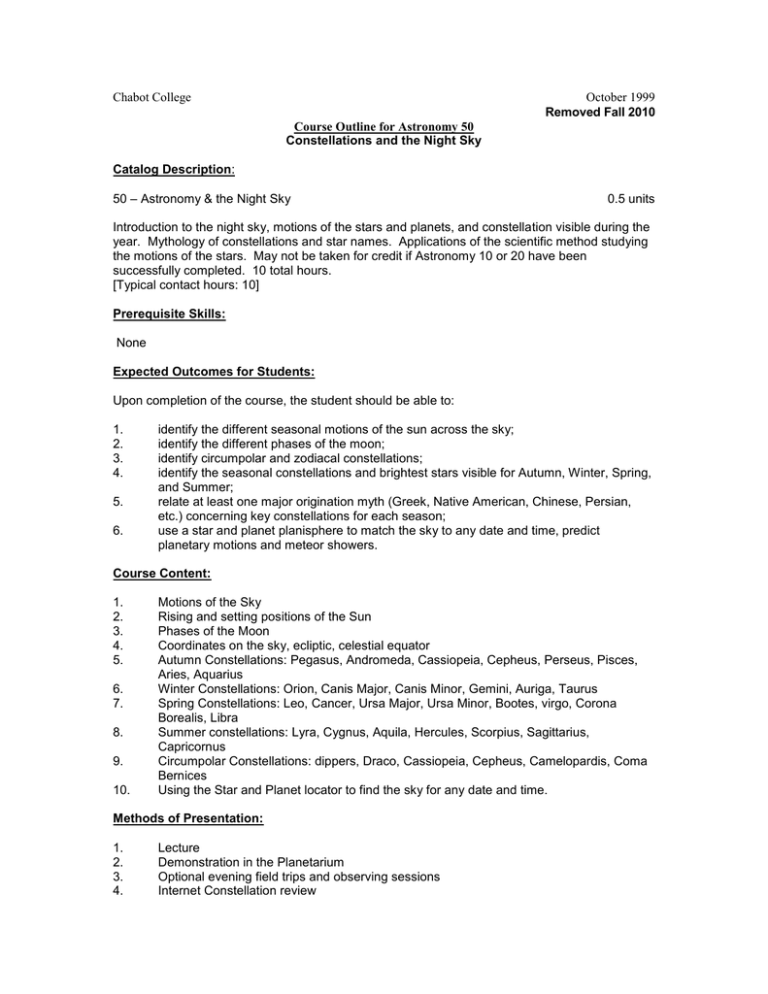
Chabot College October 1999 Removed Fall 2010 Course Outline for Astronomy 50 Constellations and the Night Sky Catalog Description: 50 – Astronomy & the Night Sky 0.5 units Introduction to the night sky, motions of the stars and planets, and constellation visible during the year. Mythology of constellations and star names. Applications of the scientific method studying the motions of the stars. May not be taken for credit if Astronomy 10 or 20 have been successfully completed. 10 total hours. [Typical contact hours: 10] Prerequisite Skills: None Expected Outcomes for Students: Upon completion of the course, the student should be able to: 1. 2. 3. 4. 5. 6. identify the different seasonal motions of the sun across the sky; identify the different phases of the moon; identify circumpolar and zodiacal constellations; identify the seasonal constellations and brightest stars visible for Autumn, Winter, Spring, and Summer; relate at least one major origination myth (Greek, Native American, Chinese, Persian, etc.) concerning key constellations for each season; use a star and planet planisphere to match the sky to any date and time, predict planetary motions and meteor showers. Course Content: 1. 2. 3. 4. 5. 6. 7. 8. 9. 10. Motions of the Sky Rising and setting positions of the Sun Phases of the Moon Coordinates on the sky, ecliptic, celestial equator Autumn Constellations: Pegasus, Andromeda, Cassiopeia, Cepheus, Perseus, Pisces, Aries, Aquarius Winter Constellations: Orion, Canis Major, Canis Minor, Gemini, Auriga, Taurus Spring Constellations: Leo, Cancer, Ursa Major, Ursa Minor, Bootes, virgo, Corona Borealis, Libra Summer constellations: Lyra, Cygnus, Aquila, Hercules, Scorpius, Sagittarius, Capricornus Circumpolar Constellations: dippers, Draco, Cassiopeia, Cepheus, Camelopardis, Coma Bernices Using the Star and Planet locator to find the sky for any date and time. Methods of Presentation: 1. 2. 3. 4. Lecture Demonstration in the Planetarium Optional evening field trips and observing sessions Internet Constellation review Chabot College Course Outline for Astronomy 50, page 2 October 1999 Assignments and Methods of Evaluating Student Progress: 1. Typical Assignments: a. Constellation ID exercises using the Star and Planet Locator b. Evening observing tasks 2. Methods of Evaluating Student Progress: a. Constellation quiz b. Observation reports c. Homework assignments Textbooks (typical): Nightwatch, by Terrence Dickinson, 1997 Special Student Materials: None Revised 12/99
